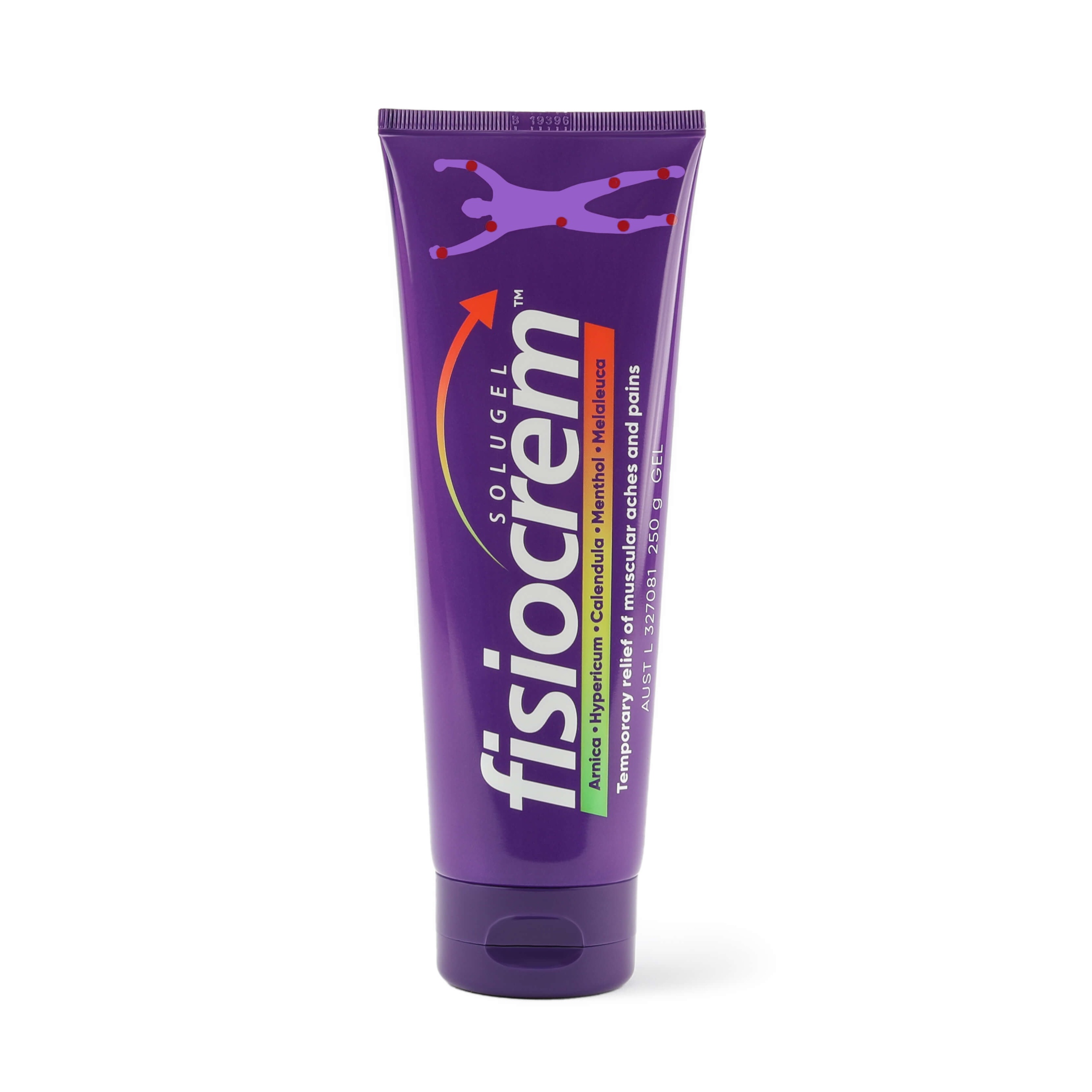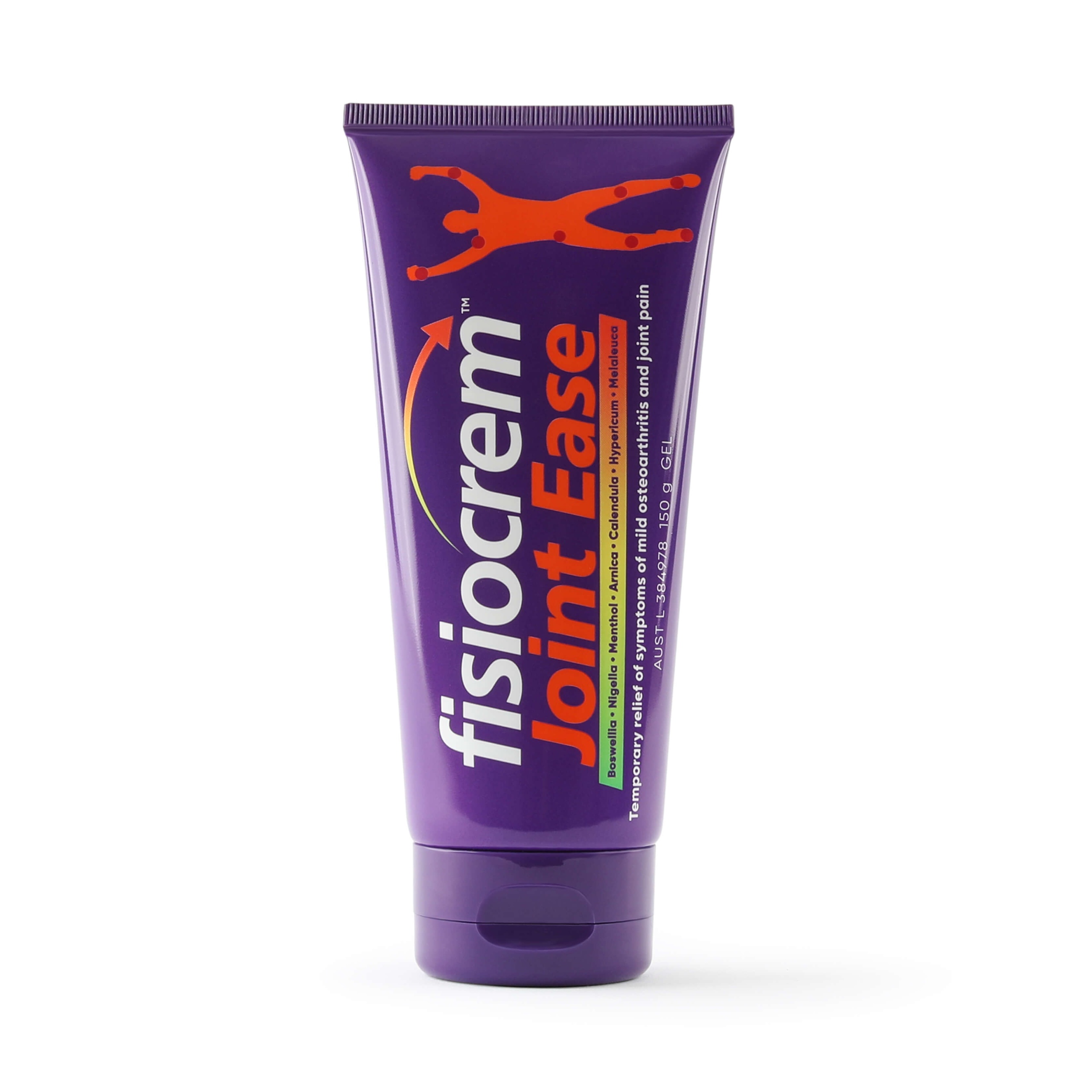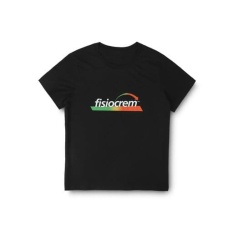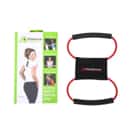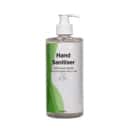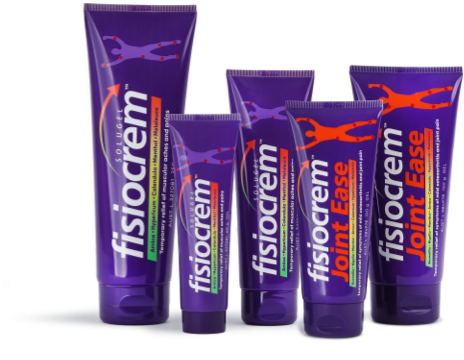Mild arthritis affects millions of people around the world. It causes joint pain, stiffness, and discomfort. These symptoms can make daily activities difficult.
With National Arthritis Week in October, it’s the perfect time to discuss ways to manage and relieve mild arthritis symptoms. In this article, we will look at ways to reduce mild arthritis pain. We will focus on lifestyle changes and topical treatments, such as fisiocrem Joint Ease.
Understanding Mild Arthritis
Mild arthritis is often an early stage of joint-related discomfort where the symptoms are present but not severe. It can affect people of any age, though it’s more common as we get older.
The most common type of mild arthritis is mild osteoarthritis. This condition affects the joints and causes cartilage to break down. As a result, it leads to pain and inflammation.
Symptoms of mild arthritis include joint pain, tenderness, and stiffness. You may also notice a decrease in your range of motion. These symptoms can get worse over time if you do not treat them.
The Importance of Early Treatment for Mild Arthritis
Managing mild arthritis early can prevent the condition from worsening. Early intervention helps maintain joint function and mobility while minimising pain and inflammation. Without proper care, mild arthritis can progress to more severe forms, significantly impacting your quality of life. By addressing it early, you can lead an active and fulfilling life, even with mild arthritis.
Topical Treatments for Mild Arthritis Pain Relief
For mild arthritis relief, topical treatments like creams and gels are popular. They can provide effective pain relief.
fisiocrem Joint Ease is a topical anti-inflammatory cream formulated to address mild arthritis pain. This topical mild arthritis gel helps reduce inflammation, relieve pain, and promote healthy joint function.
How fisiocrem Joint Ease Works
fisiocrem Joint Ease combines menthol & naturally derived active ingredients with scientific innovation to provide effective relief from mild arthritis symptoms. The gel contains key ingredients like Arnica montana, Boswellia serrata, Nigella Sativa, Calendula, Menthol, Melaleuca, and Hypericum, which work together to reduce inflammation, soothe soreness, and support joint flexibility. Its effective formula allows for easy application without a greasy residue, making it a convenient option for daily use.
Menthol & Naturally Derived Active Ingredients in fisiocrem Joint Ease
- Arnica Montana: Known for its anti-inflammatory properties, Arnica Montana helps to reduce joint pain and swelling.
- Boswellia Serrata: This resin extract helps reduce pain and improve joint function.
- Calendula: Helps repair damaged tissue and supports body tissue regeneration.
- Hypericum:(St Johns Wort), Helps to relieve mild swelling & stiffness.
- Melaleuca: (Tea tree oil) Is an anti-inflammatory & enhances the dermal penetration of the active ingredients.
- Nigella Sativa: Helps to relieve mild joint aches, pains, and soreness.
- Menthol: Relieves pain and helps to stimulate blood flow to the skin.
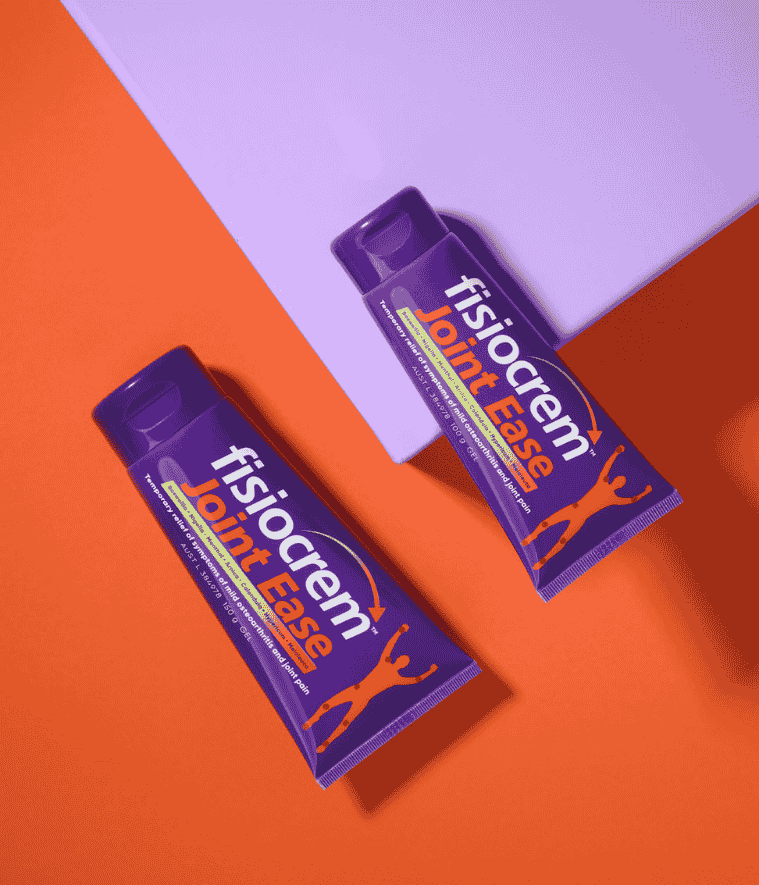
Additional Benefits of Using fisiocrem Joint Ease
In addition to pain relief, fisiocrem Joint Ease helps improve joint mobility and flexibility. This is important for staying active. Using fisiocrem Joint Ease regularly can help ease mild joint stiffness and soreness. This allows you to move more freely during the day.
Incorporating fisiocrem Joint Ease into Your Routine
To get the most out of fisiocrem Joint Ease, it’s essential to apply the product correctly. Use a small amount of the gel on the affected area and gently massage it into the skin until fully absorbed. Since the product provides temporary relief, consistency is key to managing ongoing mild arthritis symptoms.
Lifestyle Changes to Manage Mild Arthritis
In addition to topical remedies, lifestyle changes can play a significant role in managing mild arthritis symptoms. Staying active is crucial for keeping joints flexible and reducing stiffness. Low-impact exercises like swimming, cycling, and walking are ideal for individuals with mild arthritis.
Also, eating a healthy diet with anti-inflammatory foods can help reduce joint inflammation. Foods such as leafy greens, fatty fish, and nuts are ideal sources of anti-inflammatories.
The Role of Exercise in Mild Arthritis Relief
Exercise is a critical component of any management plan. Low-impact activities like yoga, swimming, and tai chi can help strengthen the muscles around your joints. These exercises improve mobility without putting too much strain on the affected areas. Regular physical activity keeps joints flexible and reduces stiffness, making it easier to go about your day.

The Impact of Diet on Mild Arthritis
A balanced diet rich in anti-inflammatory foods can complement the use of fisiocrem Joint Ease and other treatments. Foods like salmon, olive oil, berries, and leafy greens help reduce inflammation. Incorporating more whole foods and fewer processed items can significantly impact your overall joint health.
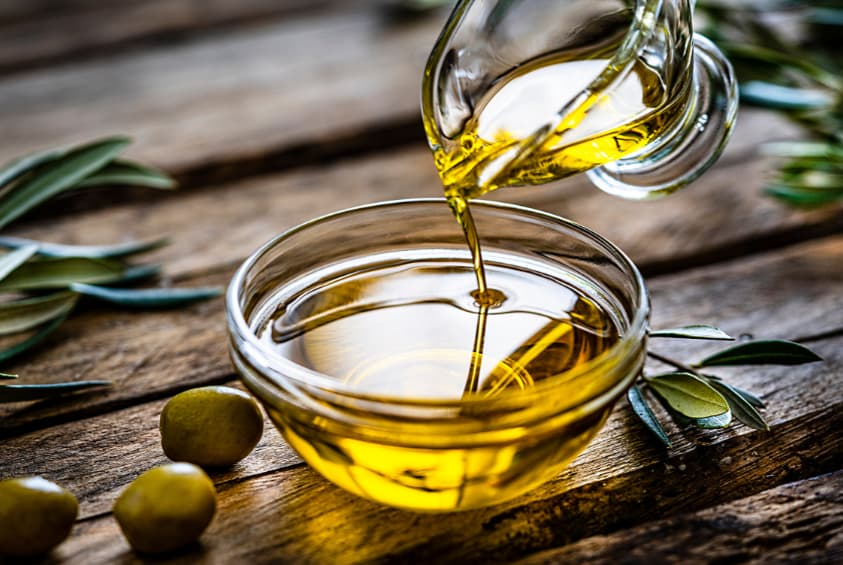
National Arthritis Week: Raising Awareness
National Arthritis Week takes place in October. October is a time to raise awareness about mild arthritis and its impact on daily life. It provides a platform for sharing resources, support networks, and the latest research on managing the condition.
By joining events this week, you can meet others with similar experiences. You can also discover new ways to manage your mild arthritis symptoms. Learn more about National Arthritis Week.
Conclusion
Managing mild arthritis doesn’t have to be overwhelming. Using topical treatments like fisiocrem Joint Ease, making lifestyle changes, and staying active can help reduce pain. These steps can also improve your quality of life. National Arthritis Week is a great time to take action, educate yourself, and find the support you need.
fisiocrem Solugel vs fisiocrem Joint Ease
When it comes to managing pain, from sore muscles, sprains, or mild arthritis, selecting the right topical treatment can greatly improve your comfort and recovery.
fisiocrem Australia offers two effective topical products: fisiocrem Solugel and fisiocrem Joint Ease. In this blog, we will discuss the differences between the two gels. We will also discuss their benefits and answer common questions about relieving muscle and mild joint pain.
fisiocrem Solugel - Muscle pain relief
Crafted to alleviate muscle-related pain and mild sports injuries. fisiocrem Solugel offers relief for a diverse range of individuals. This includes people with back pain from work, muscle pain, and health professionals looking for treatment options for clients.

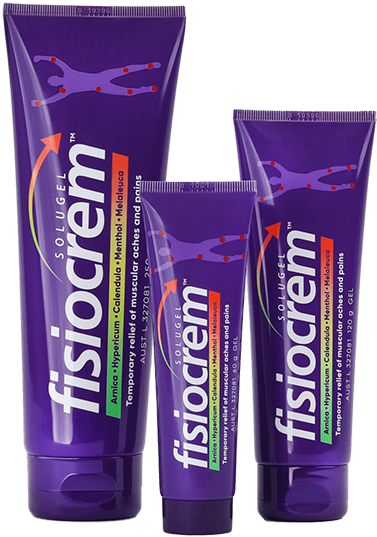
Contains 5 Active Ingredients:
fisiocrem Solugel expertly combines five powerful active ingredients: Arnica, Hypericum, Calendula, Melaleuca, and Menthol. The ingredients are carefully balanced to help relieve muscle pain, speed up recovery after exercise, and work together simultaneously. This precise formulation also ensures that the product remains non-greasy and absorbs well into the skin.
A clinical study has shown that the specific percentages of these active ingredients deliver effective results. Since its development, we have adhered to this formula, ensuring consistent, high-quality muscle pain relief. Our commitment to maintaining this original formula ensures that fisiocrem Solugel continues to provide the reliable results our customers depend on (Ramon et al, 2022).
Key Benefits:
- Aids in the healing of minor bod tissue injuries
- Relieve symptoms of soft body tissue trauma
- Helps in the healing of minor muscle injuries
- Relieve mild muscle inflammation
- Helps in the management of muscle sprain and strain
- Relieve muscle pain and soreness
- Relieve bruise pain and swelling
- Helps improve muscle recovery time
You can use fisiocrem Solugel alongside blood-thinning medications.
fisiocrem Joint Ease - Mild arthritis pain relief
Formulated to target specific joint concerns including mild joint pain, mild arthritis relief, and mild osteoarthritis. fisiocrem Joint Ease caters to the needs of individuals, particularly the elderly and those facing joint health challenges. fisiocrem Joint Ease is for those seeking a reliable option for improved mobility and joint comfort.

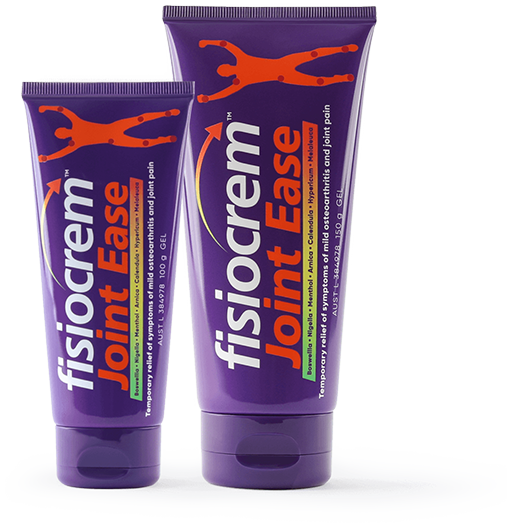
Contains 7 Active Ingredients:
fisiocrem Joint Ease features the same 5 active ingredients as fisiocrem Solugel, plus 2 additional botanical ingredients: Boswellia and Nigella. The original actives found within fisiocrem Solugel are in lower percentages within fisiocrem Joint Ease. This is to avoid diminishing the effectiveness of the new additional botanical ingredients. This balanced formulation also ensures the gel remains non-greasy, absorbs well into the skin, and provides maximum comfort.
Key Benefits:
- Relieve mild joint aches and pains
- Relieve symptoms of mild arthritis and mild osteoarthritis
- Helps promote healthy joint function
- Relieve mild joint inflammation and swelling
- Maintain joint mobility and flexibility
- Relieve mild joint pain and soreness
- Helps improve joint mobility
- Relieve mild joint stiffness
What do both products do?
Both fisiocrem Solugel and fisiocrem Joint Ease are topical anti-inflammatories, suitable for use alongside oral anti-inflammatories or diclofenac tablets.
Before using our products, talk to your doctor if you are taking medications or have health conditions. This will ensure that it is suitable for you. Your doctor can provide guidance on whether our products are suitable for you based on your individual health needs.
Comparing fisiocrem Solugel and fisiocrem Joint Ease
Both products provide pain relief, but their formulations cater to different needs.
fisiocrem Solugel is best suited for muscle pain, such as soreness from physical activity or minor muscle injuries.
fisiocrem Joint Ease relieves mild joint pain and reduces symptoms of mild arthritis, like joint stiffness. This makes it an excellent option for individuals dealing with these joint-related conditions.
Pain Management with fisiocrem Products
Managing pain effectively often requires a combination of treatments. Here are some tips for getting the most out of fisiocrem products:
- Regular Application: Consistently applying the gel to the affected area can help maintain pain relief and support healing.
- Gentle Massage: Gently massaging the gel into the skin can improve absorption and enhance its effects.
- Using fisiocrem along with other treatments like physiotherapy, stretching, and rest can help manage pain effectively.
Choosing the right pain relief cream can significantly impact your comfort and recovery. Whether you’re dealing with muscle pain or mild arthritis, fisiocrem Solugel and fisiocrem Joint Ease are effective treatment options that fit your needs. Understanding the differences and benefits of each product helps you make better decisions and manage your pain more effectively.
You can find both fisiocrem Solugel and fisiocrem Joint Ease, Australian pain relief products, in stores nationwide.
FAQs: Answering Your Questions on Pain Relief
What is the best ointment for muscular and mild joint pain?
fisiocrem Solugel is more suitable for muscular pain.
We recommend fisiocrem Joint Ease for mild joint pain, including mild arthritis and mild osteoarthritis.
What are the best ways to get rid of muscle pain?
Regularly using a muscle pain cream like fisiocrem Solugel can help reduce muscle pain. Resting, staying hydrated, and doing gentle stretches are also beneficial. These actions can all work together to alleviate muscle pain.
What are some ointments that are good for mild joint pain?
fisiocrem Joint Ease specifically targets mild joint pain and provides effective relief for mild arthritis, supporting joint health.
What is the best cream for a sprained ankle?
For a sprained ankle, fisiocrem Solugel can help reduce inflammation and pain, promoting faster recovery.
Anti-inflammatory creams and gels – Do they work?
Yes, anti-inflammatory creams and gels like fisiocrem Solugel and fisiocrem Joint Ease can effectively reduce inflammation and provide temporary pain relief.
What is an anti-inflammatory cream?
An anti-inflammatory cream contains ingredients that help reduce inflammation and swelling in the affected area, providing pain relief and promoting healing.
What is the best soothing gel for muscle pain?
fisiocrem Solugel is an excellent choice for soothing muscle pain because of its blend of active ingredients.
Which is the best pain relieving cream?
fisiocrem Solugel and fisiocrem Joint Ease are both effective topical treatments. The choice depends on whether the pain is muscular or joint related.
How do pain relief creams relieve pain?
Pain relief creams absorb into the skin to bring anti-inflammatory and pain-relieving ingredients to the affected area.
Which pain relieving cream works best for mild arthritis?
fisiocrem Joint Ease is specifically formulated to temporarily relieve mild arthritis. It also supports overall joint health and helps to reduce pain.
How does pain relief gel work?
The skin absorbs pain relief gels, delivering ingredients that reduce inflammation and relieve pain in the specific area.
Citations
- Ramon et al Ortho & Rheum Open Access J 20(1): OROAJ.MS.ID.556028 (2022) This study was funded by fisiocrem.
Seasonal Changes and the effect on mild arthritis
Seasonal changes can indeed have a profound impact on individuals with mild arthritis and mild osteoarthritis (Mori et al. 2019). Different weather conditions, such as temperature, pressure, humidity, sunshine, clouds, wind, and rain, can affect mild arthritis symptoms. Therefore, adapting lifestyle strategies to manage mild arthritis effectively throughout the year is important (Iikuni et al. 2007).
As winter sets in, many patients experience a noticeable uptick in musculoskeletal symptoms. This increase in discomfort because of the cold weather, can trigger muscle spasms and reduce blood circulation, causing joint pain and stiffness (Mori et al. 2019). Research shows that colder temperatures can increase pain levels and stiffness in joints (Aikman, 1997).
Understanding the effect of seasonality on joint pain is integral to developing effective management strategies (Mori et al. 2019).
In this article, we’ll explore the intricate relationship between cold weather and mild arthritis, offering practical tips to help you navigate the winter season with greater comfort. We will also introduce you to fisiocrem Joint Ease. A topical solution that helps with mild osteoarthritis, mild arthritis, mild joint pain, and inflammation.
Understanding Cold Weather & Mild Arthritis:
Cold weather can be particularly harsh on those with mild arthritis, intensifying pain and stiffness associated with the condition. The physiological response to cold temperatures plays a significant role in aggravating symptoms.
When exposed to cold air, our blood vessels constrict, reducing blood flow to the extremities of the body such as the hands and feet. The decrease in temperature can increase sensitivity and pain causing the joints to feel stiffer (Cheung, 2015).
Additionally, fluctuations in barometric pressure, often accompanying cold fronts, can further contribute to joint discomfort. An increase in barometric pressure may cause joint discomfort to become more evident (Wu et al. 2022).
The weather not only affects the conditions of mild osteoarthritis symptoms, but it also affects the ease and willingness of patients to seek medical treatment. Heavy rains, snow and intense winds may make visiting health professionals increasingly difficult for patients. Moreover, extreme cold weather may also affect a person’s willingness to engage in outdoor activities (Wu et al. 2022).
Tips for Managing Mild Arthritis in Winter:
1: Stay Warm:
Ensuring proper insulation against the cold is vital for easing mild winter joint pain. Wearing warm clothes, layering, and using heated blankets can preserve body heat and ease joint pain. Remember to cover areas that are prone to pain to stay comfortable during the colder months. Wearing warmer clothes in cold weather can help manage mild arthritis and mild joint pain during winter (Mori et al. 2019).
2: Maintain Physical Activity:
While it may be tempting to hibernate indoors during winter, staying active is crucial for managing mild arthritis. Low-impact exercises such as walking, swimming, or yoga can help maintain joint flexibility and strengthen surrounding muscles (Kettunen et al. 2004).
Need support in staying active with mild arthritis?
Join a virtual group exercise program designed to boost physical activity levels. From home, engage in weekly live sessions led by knowledgeable instructors, guiding personalised routines. The 12-week program offers support, motivation, and resources to seamlessly integrate safe exercises. These tailored exercises help to alleviate discomfort for a more manageable lifestyle.


3: Topical mild arthritis pain relief creams or gels
Topical anti-inflammatory and analgesic creams can help provide relief for mild arthritis, mild osteoarthritis and mild joint pain. Topical creams and gels tend to have fewer side effects when compared to oral medications (Jurca et al. 2020).
Applying a topical mild arthritis pain relief cream directly to the affected joints can help alleviate discomfort and reduce inflammation, allowing for improved mobility and comfort.
You can find fisiocrem Joint Ease online or at your local pharmacy, and Chemist Warehouse.
fisiocrem Joint Ease contains active ingredients including Boswellia and Nigella. It provides temporary relief for mild arthritis and mild joint pain.
Nigella Sativa oil has anti-inflammatory and analgesic effects helping to relieve mild joint pain and swelling (Mahboubi et al. 2018). Boswellia Serrata can help reduce swelling, and pain and ease stiffness (Etzel, 1996).
fisiocrem Joint Ease can help you to keep you moving and feel more comfortable during the winter season.
Incorporating this topical mild arthritis cream into your daily routine can help you manage your symptoms. Enhance your overall well-being during the colder months with fisiocrem Joint Ease.


As winter arrives, managing mild arthritis and mild joint pain becomes a top priority for many. Understanding how cold weather affects mild arthritis symptoms and using proactive strategies can help reduce discomfort and make winter more comfortable.
Remember, fisiocrem is here to support you on your journey, providing topical relief when you need it most.
FAQs:
Why is mild arthritis worse in winter?
Cold weather can cause blood vessels to constrict, leading to increased joint stiffness and pain.
Does cold weather affect mild arthritis?
Yes, changes in temperature and barometric pressure can exacerbate symptoms of mild arthritis.
What are your top tips for dealing with mild arthritis pain in winter?
Stay warm, stay active, and consider incorporating topical pain relief gels like fisiocrem Joint Ease into your routine.
How to treat mild joint pain in the winter?
Focus on warmth, exercise, and topical remedies to alleviate discomfort and improve mobility.
Is mild arthritis worse in winter or summer?
While both seasons present challenges, many individuals report increased pain and stiffness during the colder months.
Citations
- Aikman, H. (1997). International Journal of Biometeorology, 40(4), 192–199.
- Cheung, S. S. (2015). Responses of the hands and feet to cold exposure. Temperature, 2(1), 105–120.
- Etzel, R. (1996). Phytomedicine, 3(1), 91-94.
- Jurca, T., Józsa, L., Suciu, R., Pallag, A., Marian, E., Bácskay, I., Muresan, M., Liana Stan, R., Cevei, M., Cioara, F., Vicas, L., Fehér, P. (2020). Molecules, 26(1).
- Kettunen, J. A., & Kujala, U. M. (2004). Scandinavian Journal of Medicine & Science in Sports, 14(3), 138–142.
- Iikuni, N., Nakajima, A., Inoue, E., Tanaka, E., Okamoto, H., Hara, M., Tomatsu, T., Kamatani, N., Yamanaka, H. (2007). Volume 46(5) 846-848.
- Mahboubi, M., Mohammad Taghizadeh Kashani, Leila., Mahboubi, M. (2018). Phytomedicine, 46, 69-77.
- Mori, H., Sawada, T., Nishiyama, S., Shimada, K., Tahara, K., Hayashi, H., Kato, E., Tago, M., Matsui, T., Tohma, S. (2019). BMC Musculoskeletal Disorders, 20(1).
- Wu, R.-Y., Pan, R.-H., Wu, C.-Y., Chan, C.-L., & Yeh, H.-J. (2022). BMC Musculoskeletal Disorders, 23(1).
Introduction to Mild Osteoarthritis Pain
Mild Osteoarthritis (OA) is a degenerative joint disease that affects millions of people worldwide (Sinusas, 2012). It occurs when the protective cartilage that cushions the ends of your bones wears down over time. As a result, the bones begin to rub against each other, leading to pain, stiffness, and swelling in the affected joints. Mild osteoarthritis pain can significantly impact daily activities and quality of life, making effective pain management crucial.
The Role of Topical Creams in Pain Management
Topical creams offer a convenient and non-invasive way to manage mild osteoarthritis pain. Topical creams and gels are applied directly to the skin over the affected area, delivering targeted pain relief.
These creams can contain various active ingredients, such as menthol, nigella, or capsaicin (Sinusas, 2012). These actives work by numbing the nerves or reducing inflammation in the joints (Mahboubi, 2017).
Topical creams can alleviate pain and stiffness, enhancing joint range of motion for individuals with mild osteoarthritis (Gemmell et al., 2003)(Kraemer et al., 2004).
Introduction to fisiocrem Joint Ease
fisiocrem Joint Ease is a topical cream/gel specifically formulated to provide temporary relief from symptoms associated with mild osteoarthritis pain. Its contains menthol and naturally derived active ingredients, including nigella, boswellia, arnica, calendula, hypericum, and melaleuca. We carefully selected these ingredients for their anti-inflammatory and analgesic properties.
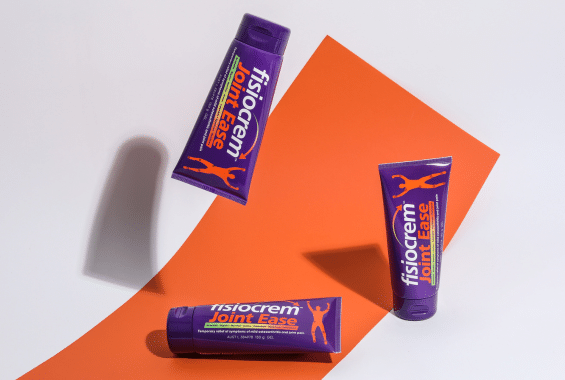
Our hero active Ingredients found within fisiocrem Joint Ease
Nigella Sativa Oil helps to protect cartilage from damage and effectively relieve pain as an anti-inflammatory for individuals with mild osteoarthritis (Kooshki et al., 2016)(Azizi et al., 2019)(Ghamari, et al., 2023).
Boswellia helps alleviate pain and stiffness, improves joint function, and reduces swelling, providing effective relief for individuals suffering from mild osteoarthritis. This active ingredient work together to provide comprehensive relief for those experiencing the discomfort and limitations associated with mild osteoarthritis (Bannuru et al., 2018)(Kimmatkar et al., 2003).
Efficacy of fisiocrem Joint Ease in Relieving Mild Osteoarthritis Pain
fisiocrem Joint Ease offers multiple benefits for individuals suffering from mild osteoarthritis pain. It helps reduce swelling and inflammation in the joints and provides relief from pain. Additionally, fisiocrem Joint Ease supports tissue repair and regeneration, helping to maintain joint health and mobility over time.
How fisiocrem Joint Ease Enhances Joint Function and Mobility
In addition to providing pain relief, fisiocrem Joint Ease helps enhance joint function and mobility. The active ingredients work together to promote healthy joint function and maintaining flexibility. fisiocrem Joint Ease supports overall joint health and reduces the symptoms of stiffness and immobility associated with mild osteoarthritis.
fisiocrem Joint Ease can assist individuals with mild osteoarthritis in staying active and mobile, whether as part of a daily routine or for acute pain flare-ups.
Using fisiocrem Joint Ease for Mild Osteoarthritis Pain Relief
fisiocrem Joint Ease is a simple and effective mild osteoarthritis treatment, designed to be applied directly to the affected area as needed. Easy to use, it involves massaging a small amount of cream into the skin over the painful joint until fully absorbed. For optimal results in managing mild osteoarthritis pain, we recommend integrating fisiocrem Joint Ease into your regular treatment routine.
If you have sensitive skin, test this product on a small area of skin before applying it to a larger area.
FAQs (Frequently Asked Questions)
1. How long does it take to experience relief with fisiocrem Joint Ease?
The time it takes to feel relief from fisiocrem Joint Ease varies for each person. Many users report feeling the effects shortly after applying it. To achieve optimal results, we recommend using the cream regularly as part of your pain management routine.
2. Can fisiocrem Joint Ease be used alongside other medications?
fisiocrem Joint Ease can be used alongside some medications including warfarin and oral anti-inflammatories. However, it is advisable to consult with a healthcare professional to ensure compatibility with any existing treatments or medications.
3. Are there any side effects associated with fisiocrem Joint Ease?
While fisiocrem Joint Ease is well-tolerated by most individuals, some people may experience mild skin irritation or allergic reactions. If you experience any adverse effects, discontinue use immediately and consult with a healthcare professional.
For added safety, it is advisable to conduct a patch test as a safety measure. Just apply a small amount of the product to a small area of skin before using it on a larger area. This method helps to ensure that the product is well-tolerated by the individual prior to broader application.
4. Where can I purchase fisiocrem Joint Ease?
fisiocrem Joint Ease mild osteoarthritis pain relief cream is available for purchase online and at select retailers.
Citations
- Azizi, F., Ghorat, F., Rakhshani, M., Rad, M. (2019). Journal of Herbal Medicine, 16.
- Bannuru, R., Osani, M., Al-Eid, F., Wang, C. (2018). 48(3), 416-429. Retrieved from https://www.sciencedirect.com/science/article/abs/pii/S0049017218300027
- Gemmell, H., Jacobson, B., Hayes, B. (2003). Journal of Manipulative and Physiological Therapeutics, 26(5) 322
- Ghamari, M., Salari, M., & Khodashahi, M. (2023). Traditional and Integrative Medicine, 8(3).
- Kimmatkar, N., Thawani, V., Hingorani, L., Khiyani, R. (2003). Phytomedicine, 10(1), 3-7.
- Kooshki, A., Forouzan, R., Rakhshani, M., & Mohammadi, M. (2016). A Crossover Clinical Trial, 8(11) 3193-3197
- Kraemer, W., Ratamess, N., Anderson, J., Maresh, C., Tiberio, D., Joyce, M., Messinger, B., French, D., Rubin, M., Gomez, A., Volek, J., Hesslink, R. (2004). Retrieved from https://www.jrheum.org/content/31/4/767.short
- Mahboubi, M. (2017). Complementary Therapies in Clinical Practice. 26, 1-4.
- Sinusas, K. (2012). American family Physician, 85(1) 49-56
- Yu, G., Xiang, W., Zhang, T., Zeng, L., Yang, K., & Li, J. (2020). BMC Complementary Medicine and Therapies, 20(1).
Relieve Inflammation: 10 Effective Tips for Muscle & Joint Pain Management
Relieve inflammation with our comprehensive guide to managing muscle and joint pain effectively.
What causes inflammation in the body? Numerous factors can contribute to inflammation, with common culprits including mild arthritis, altered muscle usage, or injury (Tidball, 2005). Signs include redness, swelling, heat, pain and a loss of function (Hawiger et al., 2019).
Coping with muscle and joint pain can profoundly affect your overall quality of life. Fortunately, there are effective ways to manage inflammation and alleviate discomfort. Discover 10 actionable tips to alleviate discomfort and enhance your well-being.
1. Embrace the Power of Anti-Inflammatory Foods
Nutrition is a considerable and changeable risk factor that can cause inflammation (Hess et al., 2021).
Incorporating dietary components like fibre, antioxidants, and omega-3 fatty acids can effectively reduce inflammation symptoms such as swelling and pain (Hess et al., 2021). Focus on incorporating fruits, berries, vegetables (leafy greens and tomatoes), nuts and whole grains into your diet (Wu et al., 2012).
Steer clear of saturated fats and sodium as they can lead to increased levels of inflammation (Hess et al., 2021).
2. Stay Hydrated for Joint Health
Water is a major component of body fluids. These include that of blood and synovial joint fluid, both of these components perform vital functions in the body (Benelam et al., 2010).
Water in synovial fluids lubricates and cushions joints, making movement smoother and reducing friction (Benelam et al., 2010).
Individuals’ water needs vary based on factors like body size, composition, environment, and physical activity levels.
3. Regular Exercise
Physical activity can help to protect against numerous diseases (Ford, 2001). Engaging in regular physical exercise reduces the risk of obesity, and thus reduces inflammation in the body (Wilund, 2007)(Metsios et al., 2020).
Low-impact activities like swimming, cycling, and yoga can help strengthen muscles, improve flexibility, and reduce stiffness. Just be sure to listen to your body and avoid activities that exacerbate your pain.
4. Get Sufficient Quality Sleep
Inadequate sleep or sleep deprivation can cause an inflammatory response. Changes in sleep patterns from lifestyle, aging, or illness can lead to more inflammation, affecting overall health (Simpson et al., 2007).
Be sure to get adequate sleep and establish healthy sleep habits. It can help lower inflammation and boost your overall well-being (Simpson et al., 2007).
Aim for seven to nine hours of quality sleep each night to allow your body ample time to repair and recover. Establish a relaxing bedtime routine and create a comfortable sleep environment to promote restorative rest.




5. Incorporate Supplements Wisely
Certain supplements can complement your efforts and assist with the treatment of inflammation.
Glucosamine has been a supplement widely used to treat mild osteoarthritis and joint diseases characterised by cartilage degeneration. Glucosamine suppresses inflammatory cell activation thus helping to reduce inflammation (Nagaoka et al., 2011).
Chondroitin sulfate helps to reduce joint swelling and creates an anti-inflammatory effect within the body (Iovu et al., 2008).
Turmeric is a supplement traditionally used for its anti-inflammatory properties (Lantz et al., 2005). Turmeric can help relieve joint & muscle inflammation.
Consulting with a healthcare professional before adding any new supplements to your regimen is essential.
6. Practice Mindfulness and Stress Reduction Techniques
Stress can cause inflammation in the body. Doing activities like meditation, deep breathing, and muscle relaxation can lower stress and make you feel more relaxed (Black et al., 2002).
Engaging in activities you enjoy, like hobbies or being outdoors, can you a mental break and ease stress.
7. Maintain a Healthy Weight
Inflammation is closely linked to obesity. Carrying excess weight puts added stress on your joints, contributing to inflammation and pain. By maintaining a healthy weight, you can reduce the burden on your joints and alleviate discomfort (Rodríguez-Hernández et al., 2013).
Adopt a healthy balanced diet and incorporate regular exercise into your routine to help maintain a healthy weight.
8. Cold Therapy
Cold therapies can help reduce pain, promote blood flow and reduce inflammation whilst delaying the onset of muscle soreness (Malanga et al., 2014).
9. Consider Physical Therapy
Physical therapy can be incredibly beneficial for managing inflammation and improving muscle mass and joint function. A physical therapist can help customise an exercise program that helps to prevent and reduce inflammation (Addison et al., 2012).
10. Topical rubs
Topical analgesic rubs are an inflammation treatment option that can help relieve pain, and swelling and promote recovery (Ramon et al., 2022).
fisiocrem Solugel helps to relieve inflammation of muscles and improve body tissue repair. The synergetic action of fisiocrem Solugel’s active ingredients (Arnica, Hypericum, Calendula, Melaleuca and Menthol) help to relieve pain, stimulate blood flow and reduce swelling.
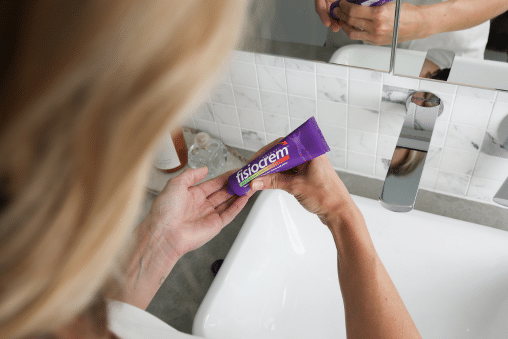
fisiocrem Joint Ease helps to relieve mild joint inflammation and helps to promote healthy joint function. fisiocrem Joint Ease relieves mild osteoarthritis symptoms and is available online or at pharmacies, including Chemist Warehouse.
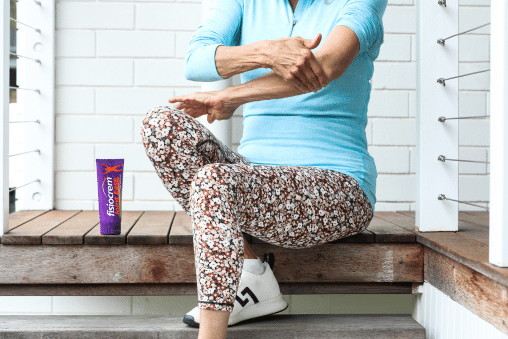
Dealing with muscle and joint pain caused by inflammation can be challenging, but it’s not impossible. By incorporating some of the above tips you can effectively manage inflammation and ease discomfort.
Consult a healthcare professional before making significant changes to your routine. Stay consistent and patient as you aim for relief.
Citations
- Addison, O., LaStayo, P., Dibble, L., Marcus, R. (2012). Inflammation, Aging, and Adiposity Implications for Physical therapists. Journal of geriatric physical therapy 35(2), 86-94.
- Benelam, B., & Wyness, L. (2010). Nutrition Bulletin, 35(1), 3–25.
- Black, P., Garbutt, L. (2002). Stress, inflammation and cardiovascular disease. Journal of psychosomatic research, 52(1), 1-23.
- Ford, E. (2001). Does Exercise Reduce Inflammation? Physical Activity and C-reactive protein among U.S. Adults. Epidemiology, 13(5), 561-568.
- Hawiger, J., & Zienkiewicz, J. (2019). Scandinavian Journal of Immunology, 90(6).
- Hess, J., Stephensen, C., Kratz, M., Bolling, B. (2021). Advances in nutrition, 12.
- Iovu, M., Dumais, G., Souich, P. (2008). Anti-inflammatory activity of chondroitin sulfate. 16(3), S14-S18.
- Lantz, R., Chen, G., Solyom, A., Jolad, S., Timmermann, B. (2005). The effects of turmeric extracts on inflammatory mediator production. Phytomedicine, 12 (6-7), 445 – 452.
- Malanga, G. A., Yan, N., & Stark, J. (2014). Postgraduate Medicine, 127(1), 57–65.
- Metsios, G., Moe, R., Kitas, G. (2020). Exercise and inflammation, 34(2).
- Nagaoka, I., Igarashi, M., Hua, J., Ju, Y., Yomogida, S., Sakamoto, K. (2011) Recent aspects of the anti-inflammatory actions of glucosamine. Carbohydrate Polymers, 84(2), 825-830.
- Ramon et al Ortho & Rheum Open Access J 20(1): OROAJ.MS.ID.556028 (2022) This study was funded by fisiocrem
- Rodríguez-Hernández, H., Simental-Mendía, L. E., Rodríguez-Ramírez, G., & Reyes-Romero, M. A. (2013). Obesity and Inflammation: Epidemiology, Risk Factors, and Markers of Inflammation. International journal of endocrinology.
- Simpson, N., Dinges, D. (2007). Sleep and inflammation. Nutrition reviews, 65(3), S244-S252.
- Tidball, J. G. (2005). American Journal of Physiology-Regulatory, Integrative and Comparative Physiology, 288(2).
- Wilund, K. (2007). Is the anti-inflammatory effect of regular exercise responsible for reduced cardiovascular disease? Clinical science, 112(11), 543-555.
- Wu, X., & Schauss, A. G. (2012). Journal of Agricultural and Food Chemistry, 60(27), 6703–6717.
Muscle and joint pain is a common complaint and a major health problem affecting the population (Bergman, 2007). This pain can significantly impact a personals daily life and activities. Pain can happen from exercise, getting older, or health problems.
This pain typically creates worse functional outcomes and can negatively impact a person’s quality of life (Kidd, 2006). Dealing with muscle and joint pain can be challenging, whether it’s a dull ache, sharp pain or persistent discomfort. This article discusses ways to reduce muscle and joint pain so you can move easily and without discomfort.
Introduction
Before diving into remedies, it’s essential to understand the root causes of muscle and joint pain.
Muscle and joint pain, also called musculoskeletal pain, can happen all over the body for different reasons. Some factors that can be a cause of this pain include injuries, overuse, inflammation, medical conditions, and lifestyle choices (Schaible, et al., 2009)(Kidd, 2006).
This pain can affect anyone, from athletes to office workers. It can range from mild discomfort to severe agony. Identifying the underlying cause can help tailor treatment approaches for effective relief.
Common Causes of Muscle and Joint Pain
1. Injuries
Acute injuries like sprains & strains are common sporting injuries that can have varying severity (Järvinen et al., 2000). Other injuries that can cause significant muscle and joint pain include fractures, dislocations, contusions and lacerations (Järvinen et al., 2007). These injuries often occur during sports activities, accidents, or sudden movements that put excessive stress on the musculoskeletal system.
2. Overuse & strain
A primary reason for muscle and joint pain is overuse and strain. Overload as a result of poor technique, or repetitive movements performed incorrectly can result in microtrauma & muscle imbalance (Järvinen et al., 2007). Excessive physical activity, insufficient recovery, and under-preparedness can lead to muscle fatigue, micro-tears, and inflammation, resulting in pain and discomfort (Aicale et al., 2018).
3. Inflammation
Infection, injuries, or inflammatory conditions in the body can cause muscle and joint inflammation (Sherwood et al., 2004). The inflammatory response triggers pain receptors, causing discomfort and tenderness.
4. Mild Arthritis/Mild Osteoarthritis
Mild arthritis and mild osteoarthritis are a common cause of joint pain. Mild osteoarthritis is a degenerative disease characterised by damage to the cartilage of the joints. Mild arthritis can lead to stiffness, swelling, tenderness and reduced mobility of the joint (Neugebauer et al., 2007).
Symptoms of Muscle and Joint Pain
- Swelling – a swollen feeling in the joints or tissues of the body (Muhammad, 2007). Swelling also known as edema, is a build-up of fluid trapped in the body’s tissues (Trayes et al., 2013). Swollen joints and muscles may appear red, warm and tender to the touch, indicating an inflammatory response.
- Stiffness – joint stiffness commonly occurs after periods of inactivity or prolonged immobilisation. Stiffness in the joints is a common symptom associated with mild arthritis (Kean, et al., 2004).
- Redness – inflamed or irritated tissues can appear red signalling increased blood flow to the affected area.
- Limited movement – muscle and joint pain can make it hard to move and do daily tasks. Reduced flexibility and mobility may worsen with time if the proper treatment and management do not occur.
Treatment options for muscle and joint pain
Doctors may prescribe medications like NSAIDs (ibuprofen), and muscle relaxants to ease pain, reduce swelling, and improve mobility (Cohen et al., 2004).
Physical therapy – programs from licensed physical therapists can help strengthen muscles, improve flexibility and correct movement patterns, reducing pain and preventing further injuries (Stucki, 2000).
Topical analgesics – topical joint & muscle pain relief creams and gels can help with localised pain. Relieving joint and muscle pain, aches and stiffness (Van Laar et al., 2012).
Severe joint pain may require surgery. Health professionals may recommend procedures like joint replacement or tendon repair to improve function and reduce pain (Sinusas et al, 2012).
Application of cold and heat therapy within 1hr post-exercise can reduce muscle pain and soreness (Wang et al., 2021). Heat therapy can help relieve mild joint pain and discomfort, and improve range of motion in winter (Hyun-Sook, 1995).
Other treatments like acupuncture, chiropractic care, and massage can help with muscle and joint pain relief (Parkinson et al., 2012). Massage therapy can help decrease pain, promote relaxation, increase blood flow, and relieve tension in the muscles (Frey Law et al., 2008).
If you experience aches and pains in muscles and joints, fisiocrem offers topical pain relief solutions.
fisiocrem Solugel - Muscle pain relief cream
fisiocrem Solugel is a muscle pain relief cream that contains menthol naturally derived active ingredients. fisiocrem is suitable for all muscle pain including calf muscle pain & neck muscle pain.
fisiocrem Solugel stands out as one of the best selling muscle pain relief creams in Australia. Find fisiocrem Solugel in your local pharmacy, Coles, Woolworths and Chemist Warehouse.
*IQVIA scan data 29/02/2024 showcases that fisiocrem Solugel is one of the most popular brands according to sales data in pharmacy.
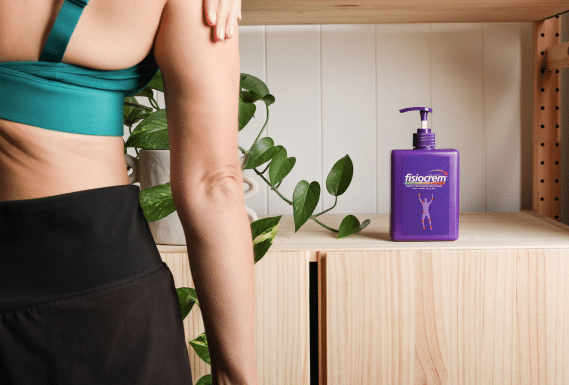
fisiocrem Joint Ease - Mild joint pain relief cream
fisiocrem Joint Ease helps temporarily relieve symptoms of mild arthritis, mild osteoarthritis, and mild joint pain.
fisiocrem Joint Ease is a joint pain relief cream that helps to relieve joint stiffness and pain and promotes healthy joint mobility.
Find fisiocrem Joint Ease at your local pharmacy & Chemist Warehouse.
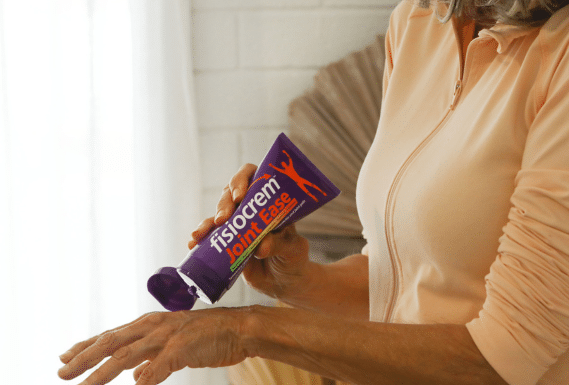
Joint and muscle pain can make simple tasks difficult, thus highlighting the need for effective pain management strategies.
Lifestyle Changes & Preventative Measures to
Manage Muscle and Joint Pain
Balanced Diet & Hydration
Eating a balanced diet with fruits, vegetables, whole grains, and lean proteins can reduce inflammation in the body. Hydration is important to help make the fluid that cushions and lubricates our joints, called synovial fluid (Benelam et al., 2010). Hydration is also beneficial for muscle strength recovery and overall cellular function (Harris et al., 2019).
Healthy Weight
Maintaining a healthy weight with a good diet and exercise can reduce strain on the body and improve overall health. If you are overweight or obese, it can cause pain in your muscles and joints. This can lead to worse joint health and more problems with the lower extremities of the body like the ankles, feet, and knees (Smith et al., 2013). A strong association exists with being overweight/obese with mild osteoarthritis pain and disability (Tukker et al., 2008).
Posture & Ergonomics
Good posture and ergonomic workspaces can help prevent muscle strain, discomfort, and musculoskeletal issues.
Regular Exercise
Exercise helps strengthen muscles, improve heart health, reduce pain and stiffness, and lower injury risk. Exercise is important for overall health and well-being. Stretching and flexibility exercises can help reduce pain, improve mobility, enhance muscle flexibility, and decrease stiffness and tightness (Behm et al., 2021).
Rest & Recover
Resting and allowing your body to recover between workouts is crucial for preventing injuries, minimising muscle fatigue, and facilitating tissue repair and regeneration.


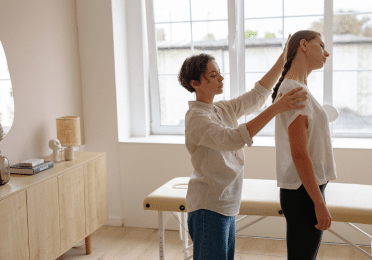
In summary, dealing with joint and muscle pains is a widespread issue that can greatly affect everyday activities. By having an understanding of muscle and joint pain, individuals can take proactive steps to manage their symptoms, improve their quality of life, and prevent future problems.
Remember to consult with a healthcare professional for advice and treatment recommendations based on your specific needs.
Citations
- Aicale, R., Tarantino, D., & Maffulli, N. (2018). Overuse injuries in sport: a comprehensive overview. Journal of Orthopaedic Surgery and Research, 13(1).
- Behm, D. G., Kay, A. D., Trajano, G. S., Alizadeh, S., & Blazevich, A. J. (2021). Effects of Acute and Chronic Stretching on Pain Control. Journal of clinical exercise physiology, 10(4), 150-159
- Benelam, B., Wyness, L. (2010). Hydration and health: a review. Nutrition Bulletin, 35(1), 3-25.
- Bergman, S. (2007). Management of musculoskeletal pain. 21(1), 153 – 166.
- Cohen, S. P., Mullings, R., Abdi, S., & Warltier, D. C. (2004). The Pharmacologic Treatment of Muscle Pain. 101, 495-526.
- Frey Law, L., Evans, S., Knudtson, J., Nus, S., Scholl, K., Sluka, K. (2008). Massage Reduces Pain Perception and Hyperalgesia in Experimental Muscle Pain: A Randomized, Controlled Trial. The journal of pain, 9(8), 714 – 721.
- Harris, P., Keen, D., Constantopoulos, E., Weninger, S., Hines, E., Koppinger, M., Khalpey, Z. (2019). Fluid type influences acute hydration and muscle performance recovery in human subjects. Journal of the international society of sports nutrition, 16 (1).
- Hyun-Sook, K. (1995). Journal of muscle & joint health, 2(2), 147-159.
- Järvinen, T., Järvinen, T., Kääriäinen, M., Aarimaa, V., Vaittinen, S., Kalimo, H., Järvinen, M. (2007). Muscle injuries: optimising recovery. 21(2), 317-331.
- Järvinen, T., Kääriäinen, M., Järvinen, M., Kalimo, H. (2000). Muscle strain injuries. Nonarticular rheumatism, sport-related injuries, and related conditions, 12(2), 155-161.
- Kean, W. F., Kean, R., & Buchanan, W. W. (2004). InflammoPharmacology, 12(1), 3–31.
- Kidd, B. (2006). Pain, 123(1), 6-9.
- Muhammad, Y. (2007). Role of central sensitization in symptoms beyond muscle pain, and the evaluation of a patient with widespread pain. 21(3), 481-497.
- Neugebauer, V., Han, J. S., Adwanikar, H., Fu, Y., & Ji, G. (2007). Molecular Pain, 3.
- Parkinson, L., Sibbritt, D., Bolton, P., van Rotterdam, J., & Villadsen, I. (2012). Clinical Rheumatology, 32(2), 167–180.
- Renström, P., & Johnson, R. J. (1985). Overuse injuries in sport. Sports Medicine, 2(5), 316–333.
- Schaible, H.-G., Richter, F., Ebersberger, A., Boettger, M. K., Vanegas, H., Natura, G., Vazquez, E., Segond von Banchet, G. (2009). Experimental Brain Research, 196(1), 153–162.
- Sherwood, E., Toliver-Kinsky, T. (2004). Mechanisms of the inflammatory response. Best practice & research clinical Anaesthesiology, 18(3), 385-405.
- Sinusas, K. (2012). Diagnosis and Treatment.
- Smith, S. M., Sumar, B., & Dixon, K. A. (2013). Musculoskeletal pain in overweight and obese children. International Journal of Obesity.
- Stucki, M. O. (2000). Scandinavian Journal of Rheumatology, 29(113), 78–85.
- Trayes, K. P., Studdiford, J. S., Pickle, S., & Tully, A. S. (2013). Edema: Diagnosis and Management. 88(2), 102-110.
- Tukker, A., Visscher, T., Picavet, H. (2008). Overweight and health problems of the lower extremities. Public health nutrition.
- Van Laar, M., Pergolizzi, J. V., Mellinghoff, H.-U., Merchante, I. M., Nalamachu, S., O’Brien, J., Perrot, S., Raffa, B. (2012). 6, 320-330
- Wang, Y., Li, S., Zhang, Y., Chen, Y., Yan, f., Han, L., Ma, Yuxia. (2021). Heat and cold therapy reduce pain in patients with delayed onset muscle soreness: A systematic review and meta-analysis of 32 randomized controlled trials. Physical therapy in sport, (48), 177-187.
The sacroiliac joint (SIJ) is where the lower spine and pelvis meet and it is the largest axial joint in the body (Forst. et al., 2006). These joints play a pivotal role in providing stability and absorbing shock when you move (Cohen, 2005). However, when these joints become inflamed or misaligned, they can lead to discomfort and pain, affecting your daily activities.
This blog will discuss pain in the SI joint, effective exercises, sleeping positions, and the best pain relief for joint pain.
The Complexity of Sacroiliac Joint Pain:
SI joint pain tends to be difficult to distinguish from other forms of lower back pain (Vanelderen et al., 2011). Diagnosing SI joint pain is hard because symptoms are similar to common causes of back pain (Dreyfuss et al., 2004). SI joint pain often manifests as lower back pain and can radiate into the buttocks and upper thighs (Cohen 2005).
The SIJ transfers large bending movements and compression loads to the lower extremities of the body (Cohen 2005).
Various factors can cause SIJ pain. These include movement, pressure, strong forces, fractures, soft tissue injury, inflammation, pregnancy, disease, leg length, and previous lumbar issues (Kiapour et al., 2020).
Pregnancy increases the chances of females experiencing SIJ pain. This is because of several factors such as weight gain, posture changes, childbirth trauma, and hormonal changes that affect the joints (Cohen 2005).
The sacrum of the female pelvis is wider, less curved, more uneven and has a backward tilt in comparison to the male sacrum. Women exhibit higher mobility, stresses/loads, and pelvis ligament strains (Kiapour et al. 2020).
Inflammation of one or both of the SIJs is an early and prominent symptom of SIJ pain (Cohen 2005).
Treatment options
Treatment of SI joint pain is a challenging problem for physicians today. Some treatment options include physical therapy, manual therapy, bracing, and injections (Dreyfuss et al., 2004).
Shoe Inserts:
Shoe inserts help distribute weight evenly on SI joints for people with different leg lengths. People with uneven leg lengths often adjust their posture to compensate for the difference in length. (Kiapour et al., 2020).
Practitioner assistance
Physical therapy, osteopathic or chiropractic manipulation can help to reduce pain and improve mobility (Cohen 2005).
Stretching and strengthening exercises
Strengthening Exercises for SI Joints:
Gentle exercises can strengthen the muscles supporting the SI joints, promoting stability and reducing pain. Pelvic tilts, bridges, and gentle yoga stretches can be beneficial. Always consult with a healthcare professional or a physiotherapist before starting a new exercise regimen. Discover Sacroiliac joint exercises.
SI Joint Pain Exercises to Avoid:
While exercise is crucial for joint health, certain exercises can worsen SI joint pain. Steer clear of intense twisting motions, heavy lifting, and high-impact activities. Instead, focus on low-impact exercises like swimming and walking to promote flexibility without straining your joints.
Sleeping Position sacroiliac joint pain relief
Your sleeping position can impact SI joint pain. Opt for sleeping on your back with a pillow under your knees to reduce pressure on your SI joints. Avoid stomach sleeping, as it can strain these joints and aggravate pain.
Bracing
Using pelvic belts can help stabilise the pelvis and limit rotation of the Si joint in pregnant women (Cohen 2005).
Injections
Clinical studies have demonstrated significant pain relief after both intraarticular and periarticular SI joint injections (Cohen 2005).
Anti-inflammatories
Over-the-counter anti-inflammatory drugs can help relieve inflammation in the affected joint area. You can apply topical Joint pain relief creams to the affected joint area to help relieve joint pain and inflammation.
fisiocrem Joint Ease - Topical Anti-inflammatory cream for joint pain relief.
fisiocrem Joint Ease is a topical anti-inflammatory solution that provides temporary relief for symptoms associated with mild arthritis, mild osteoarthritis, as well as joint pain.
Crafted with menthol and naturally derived active ingredients, including Nigella and Boswellia. Our joint pain cream offers temporary relief, promoting comfort and flexibility.
fisiocrem Joint Ease provides relief for your specific needs. It helps you live a more active and pain-free life. Whether you have mild arthritis or want to reduce joint pain, this product can assist you.
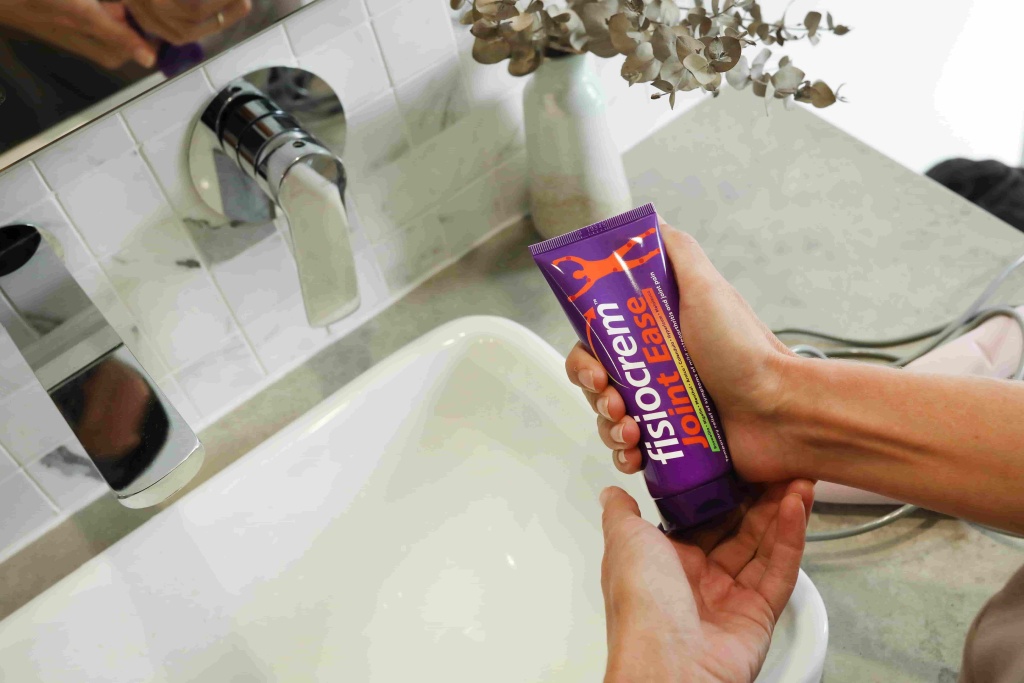
Conclusion
Understanding sacroiliac joint pain and adopting the right strategies for relief is crucial for maintaining a healthy, active lifestyle. You can greatly improve your joint health by taking proactive steps. These steps include choosing the right sleeping position, avoiding certain exercises, and using fisiocrem’s Joint Pain Relief Cream.
FAQs – Your Guide to Sacroiliac Joint Wellness:
1. What is the best pain relief for sacroiliac joint pain?
fisiocrem’s Joint Pain Relief Cream is a topical joint pain relief option. Its active ingredients provide temporary pain relief for joint pain whilst helping to reduce inflammation, making it a safe option for managing joint pain.
2. Can facet joint pain go away on its own?
Mild facet joint pain may improve with rest and gentle exercises. However, persistent or severe pain may require medical attention. Consult with a healthcare professional for personalised advice.
3. Why do I experience knee joint pain when bending?
Knee joint pain when bending may result from various factors, including issues with the patella, meniscus, or even referred pain from the sacroiliac joints. Consult a healthcare professional for an accurate diagnosis and appropriate treatment.
4. How to sit with SI joint pain
To sit comfortably with SI joint pain, use a firm chair with proper lumbar support. Keep your knees at hip level and feet flat on the floor. Avoid crossing your legs and take short breaks to stretch.
Engage your core muscles for added support. If pain persists, consult a healthcare professional for personalised advice.
Citations
- Cohen, S. (2005). Sacroiliac Joint Pain: A Comprehensive Review of Anatomy, diagnosis, and treatment. Anesthesia & Analgesia. 101(5) 1440-1453.
- Dreyfuss, P., Dreyer, S., Coles, A., Mayo, K. (2004). Sacroiliac Joint Pain : JAAOS – Journal of the American Academy of Orthopaedic Surgeons. 12(4) 255-265.
- Forst, S., Wheeler, M., Fortin, J., Vilendky, J. (2006). The Sacroiliac Joint: Anatomy, Physiology and clinical significance. 9(1) 61-68.
- Kiapour, A., Joukar, A., Elgafy, H., Erbulut, D. U., Agarwal, A. K., & Goel, V. K. (2020). Biomechanics of the Sacroiliac Joint: Anatomy, Function, Biomechanics, Sexual Dimorphism, and Causes of Pain.
- Vanelderen, P., Szadek, K., Cohen, S. P., De Witte, J., Lataster, A., Patijn, J., Van Zundert, J. (2011). Evidence‐Based Interventional Pain Medicine, 96–102.
Wholesale & Practitioners
fisiocrem Australia is devoted to helping you manage your pain, and we have been since 2009. We develop high-quality topical pain relief products that stop pain from interfering with your regular activity.
Are you visiting from New Zealand?
Visit fisiocrem New Zealand here

